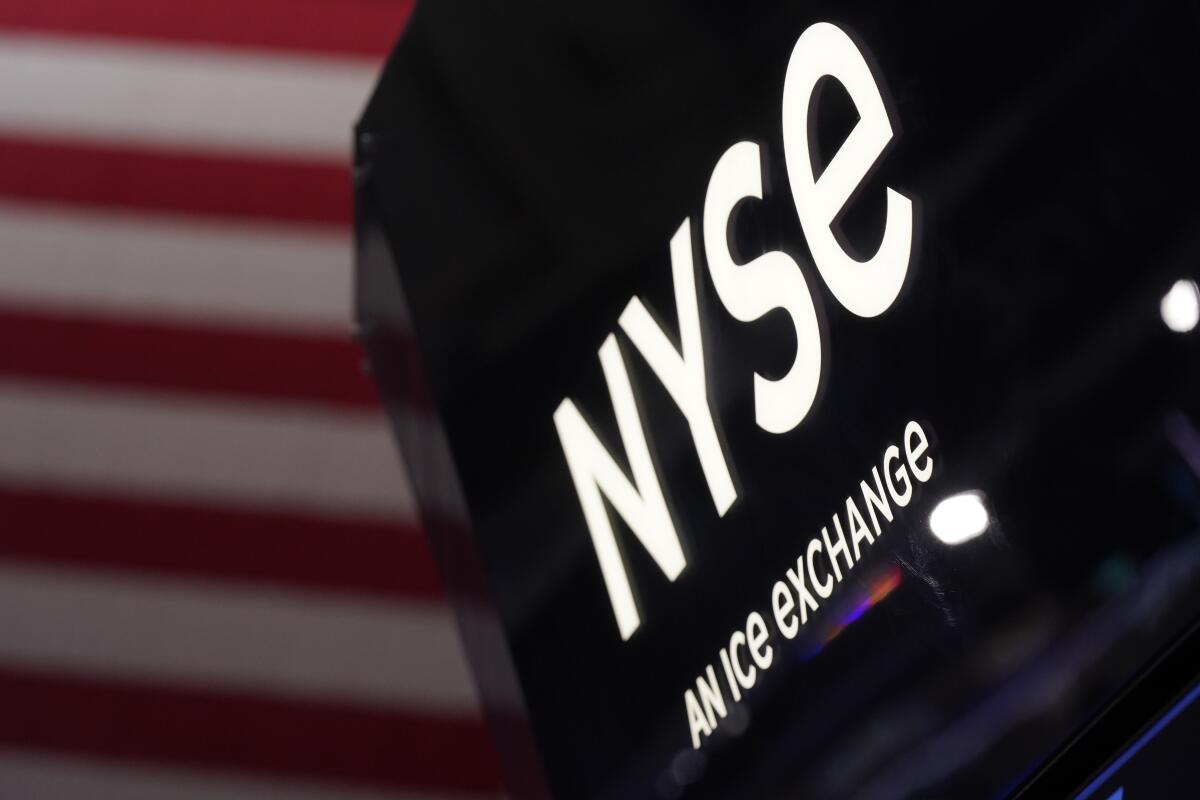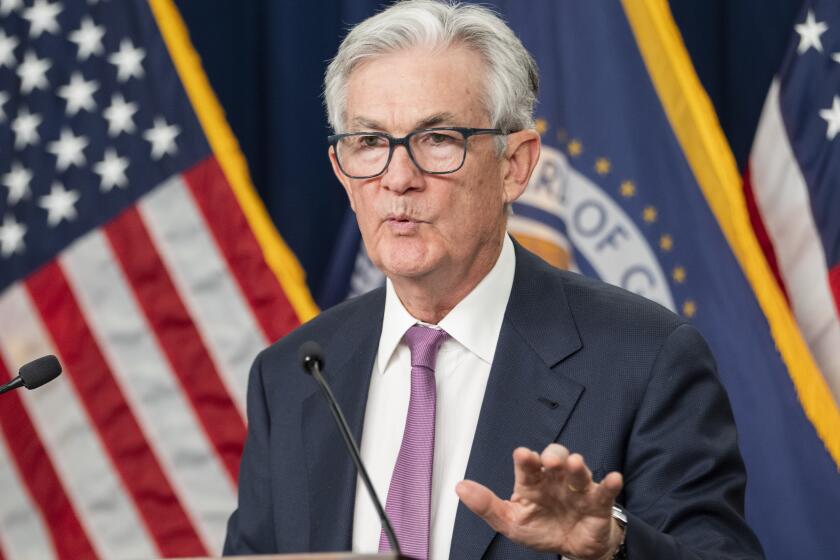Tough week on Wall Street comes to a quiet close

- Share via
The toughest week for Wall Street in nearly two months came to a quiet end on Friday, as stock indexes drifted to a mixed finish.
The Standard & Poor’s 500 rose 0.2%, but it still ended the week with a drop of 1.1%, which was its worst since December. The Dow Jones industrial average gained 169 points, or 0.5%, while the Nasdaq composite fell 0.6%.
Stocks have been struggling since rallying at the start of the year on hopes that the economy could avoid a severe recession and that cooling inflation could get the Federal Reserve to take it easier on interest rates. Worries have worsened recently that a still-strong job market could push upward on inflation and keep rates at a higher-for-longer level, much as the Fed has been warning.
Higher rates can drive down inflation but they also raise the risk of a recession and drag down investment prices. And central banks around the world are intent on raising rates, even if at a slower pace than before.
“For most central banks the risk is that they have tightened too little, not too much,” economists led by Ethan Harris wrote in a BofA Global Research report.
Mixed signals — including layoffs, strong job growth and lingering inflation — have clouded the U.S. economic outlook.
“The ultimate gauge of success here is not avoiding a recession, but getting inflation on a path back to target,” Harris wrote.
Investors will get more updates on inflation next week when the government gives its latest monthly updates on prices at both the wholesale and consumer levels.
The worries about rates mean much of Wall Street’s action has been in the bond market, where yields have climbed on expectations for a firmer Fed. The yield on the 10-year Treasury, which helps set rates for mortgages and other important loans, rose to 3.73% from 3.66% late Thursday.
The two-year yield, which moves more on expectations for the Fed, ticked up to 4.50% from 4.48%. It was at 4.08% just over a week ago and is near its highest level since November.
Companies in recent weeks have also been delivering a mixed set of earnings reports for the end of 2022.
In his first remarks since last week’s blockbuster jobs report, Fed Chair Jerome Powell said he expects a ‘significant decline’ in inflation — but also further rate hikes — in 2023.
Lyft tumbled 36.4% after its latest report. The ride-hailing company gave a forecast for revenue in the first three months of 2023 that fell short of analysts’ expectations.
Given worries about still-high inflation and a slowing economy eating into corporate profits, analysts have been cutting their earnings forecasts. So far this year, analysts have trimmed expectations for S&P 500 companies’ first-quarter earnings by 4.5%, according to strategists at Credit Suisse. That’s a deeper cut than average.
News Corp. fell 9.4% after the owner of the Wall Street Journal and other media reported weaker quarterly results than expected. It also said it will cut 5% of its workforce in 2023 as it contends with higher interest rates and inflation.
Expedia lost 8.6% after reporting weaker profit and revenue for the latest quarter than expected.
On the winning side were energy stocks, which rose with the price of crude oil. Valero Energy gained 6.1%, and Marathon Oil climbed 6.2%.
Oil prices rose after Russia said it will cut oil production by 500,000 barrels per day next month. Western countries had capped the price of Russia’s crude over its invasion of Ukraine. Brent crude, the international standard, rose $1.89 to $86.39 per barrel.
Benchmark U.S. crude rose $1.66 to $79.72 per barrel.
Sharp rises in energy prices are one of the two big risks that Yung-Yu Ma, chief investment strategist at BMO Wealth Management, sees ahead for the market. That would send inflation higher and push the Fed to raise rates even higher than the forecasts Wall Street has just recalibrated to this past week.
The other big risk he sees is if growth in workers’ wages stays too high, which the Fed could also see as pushing upward on inflation and potentially causing a reacceleration.
“The Fed is more concerned with inflation staying down,” Ma said. “The market just wants it to come down. Once it comes down, the narrative is going to change: Will it stay down and allow the Fed to make a ‘dovish pivot’” by talking about rate cuts “or will it reaccelerate and cause the Fed to be on a longer-term inflation fighting mission?”
In the meantime, he said, “the best we can hope for is the Fed not raising rates too high and just being patient, letting them remain at that level for a while to see how things play out.”
All told, the S&P 500 rose 8.96 points to 4,090.46 on Friday. The Dow gained 169.39 to end at 33,869.27, while the Nasdaq fell 71.46 to 11,718.12.
AP business writers Damian J. Troise, Yuri Kageyama and Matt Ott contributed to this report.
More to Read
Inside the business of entertainment
The Wide Shot brings you news, analysis and insights on everything from streaming wars to production — and what it all means for the future.
You may occasionally receive promotional content from the Los Angeles Times.












